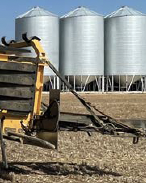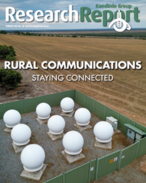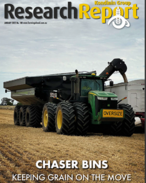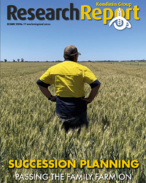This article is 6 years old. Images might not display.
When shifting over-dimension harvesting equipment down the road, rotating beacons on machinery and pilot vehicles are usually required.
Traditional halogen models are prone to failure with seized rotating mirrors, blown lamps or damaged amber lenses.
Often it is because the beacon has been stored rolling around behind the seat of a ute for the majority of the season.
LED rotating beacons are much more resilient to this type of treatment and their popularity has grown as a result over the past few years.
Rather than use a single light source and a mirror, LED rotating beacons use a number of LED directed out around the circumference of the unit.
While a variety of flash patterns are usually selectable, only rotating style patterns are permissible.
There are also rules as to minimum specifications and how the LED rotating beacons should perform in service.
Kondinin Group machinery expert, Mark Saunders, said that farmers planning to buy LED rotating beacons should ensure they meet regulatory requirements by:
- Emitting a yellow coloured light of rotating and flashing effect
- Having a combined output of 25 watts.
- Rotating at 120-200 revolutions per minute.
- Not be a strobe light
Craig Gorfin from Central Wheatbelt Imports said that strong cushioned magnetic bases required on the beacons can also add to the cost, but ensure they stay fixed in position when driving on the highway and the cushion prevents damage to vehicles or machinery paint.
By way of indicative pricing, a 32x1 watt LED rotating beacon pictured with 4-position magnetic base retails at $121.00 including GST.






















